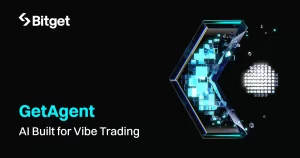3 AI-Focused Cryptocurrencies Showing Strong Bullish Momentum — What to Watch and Why

Cryptocurrency traders and investors watch momentum for a simple reason: it often signals where capital and sentiment are flowing next. Recent market scans highlight three mid-cap tokens—REVOX, Band Protocol (BAND), and BounceBit—that have attracted attention for their price moves, volume surges, and concrete narrative catalysts tied to AI, data infrastructure, and real-world asset integration. Below is a clear, practical guide to what pushed each token higher, which indicators matter going forward, and how to think about risk and opportunity.
Why these three matter
Each project represents a different angle of the AI + crypto story. REVOX pairs AI integrations and exchange listings with a platform strategy focused on Web3 users. Band Protocol supplies decentralized data feeds that AI and DeFi apps need to function reliably across chains. BounceBit combines tokenized institutional products and CeDeFi features that make real-world capital flow into blockchain liquidity pools. Together they illustrate overlapping themes investors should monitor: AI partnerships and tooling, cross-chain data delivery, and tokenized institutional assets.
Snapshot of recent performance
A quick table summarizes the headline metrics that drove attention over the past week.
| Token | 24h Change | 7d Change | Market Cap (approx.) | Volume Drivers / Catalysts |
|---|---|---|---|---|
| REVOX | +15% | +79% | $90M | New exchange listings (Biconomy, HyperliquidX), partnership with Eliza Labs integrating AI hardware into DEVA; 251% volume spike to $14.8M |
| Band Protocol (BAND) | +16.8% | +21% | $143M | Rebrand as “data layer for Web3 and AI”, v3 mainnet upgrade (1s block times), doubled volume to $104M, partnerships with Injective and Cronos |
| BounceBit | +16% | +11% | $95M | Integration of Franklin Templeton’s tokenized fund, $16M token buybacks, 570% volume jump to $75M; CeDeFi positioning |
What drove the moves — and why those developments matter
- REVOX: Listings and an AI partnership accelerated speculative interest. Exchange listings typically unlock liquidity and new buyer pools; in REVOX’s case, listings on Biconomy and HyperliquidX corresponded to a substantial volume spike. More consequential for long-term narrative: the partnership with Eliza Labs to integrate AI hardware into DEVA suggests REVOX is trying to anchor itself to real AI infrastructure rather than merely using “AI” as a marketing angle. Investors should watch user metrics for DEVA and trading traction on the new exchanges to separate transient pumps from sustained adoption.
- Band Protocol: Data feeds power many smart contract use cases; Band’s marketing pivot toward being the “data layer for Web3 and AI” aligns with growing demand for low-latency, cross-chain oracles. The v3 mainnet upgrade improved block times and broadened cross-chain feeds—technical changes that can attract developers. Partnerships with Injective and Cronos broaden Band’s addressable market in DeFi and tokenized real-world assets. For developers and token holders, adoption metrics (number of feeds, third-party integrations, fees earned by oracles) will indicate whether momentum turns into durable utility.
- BounceBit: Institutional integrations changed the tone. Adding a Franklin Templeton tokenized fund and executing meaningful buybacks impressed traders and signaled product-market fit for CeDeFi—where centralized financial institutions and decentralized protocols intersect. Volume and TVL growth after mainnet rollout matter most here: token buybacks can support price, but recurring inflows into BounceBit Prime and rising TVL show the product attracting capital rather than simply engineering supply-side price support.
How to evaluate momentum signals — practical guide
Momentum can give early advantage, but it also carries noise. Use this framework to assess whether a token’s run has legs.
- Volume confirmation: Check whether rising price accompanies significantly higher volume across multiple venues. Single-exchange spikes can reverse once listing hype fades.
- Fundamental catalyst: Distinguish marketing from hard product progress. Partnerships, mainnet upgrades, and real integrations (e.g., tokenized funds onboarded, developer portal usage) outscore mere announcements.
- User and developer metrics: For platform tokens, active addresses, API calls, number of feeds or dApps, and TVL provide the clearest evidence of sustained demand.
- Tokenomics and supply events: Know whether buybacks, token unlocks, or scheduled emissions will change circulating supply. Buybacks can prop prices short-term; large unlocks can exert downward pressure.
- Exchange listings and liquidity: Broader listings reduce slippage and open access to new buyer bases, but they also expose tokens to fast funds that amplify volatility.
- Narrative durability: Is the token tied to a secular trend (AI tooling, cross-chain oracles, institutional tokenization) or a headline that can dissipate quickly?
Risk checklist
- High volatility: Mid-cap tokens often swing 20%+ intraday. Position sizing matters.
- Liquidity gaps: Even with listings, depth can be shallow on some venues, increasing slippage.
- Execution risk: Partnerships and upgrades can delay or underdeliver.
- Regulatory and institutional risk: Tokenized funds and CeDeFi interfaces may face compliance scrutiny.
- Information asymmetry: Smaller projects can attract rumor-driven flows; verify announcements with on-chain or third-party sources.
Tactical ideas for different risk profiles
- Conservative: Observe metrics for two to four weeks after a major catalyst (listing, upgrade, institutional integration). Focus on on-chain activity, TVL trends, and developer adoption before allocating significant capital.
- Balanced: Build a small core position after initial confirmation (price+volume+first on-chain signs). Add on pullbacks supported by sustained volume or positive fundamental updates.
- Aggressive: Trade shorter-term momentum around catalysts, using tight stops and small sizes. Consider liquidity provision strategies on reputable exchanges, but be mindful of impermanent loss and sudden de-pegs.
Red flags to watch
- Volume concentrated on a single exchange or washed-through liquidity.
- Major token unlocks scheduled within days or weeks.
- Partnerships that lack technical deliverables or show only marketing alignment.
- Rapid price moves without corresponding on-chain or product usage increases.
The bottom line — how to approach these momentum plays
REVOX, Band Protocol, and BounceBit highlight distinct ways AI-related narratives can translate to price action: infrastructure integrations, improved oracle data for AI/DeFi, and institutional tokenization combined with DeFi mechanics. Momentum often delivers attractive entry points, but the lasting winners show clear on-chain adoption, repeatable revenue or usage models, and roadmaps that deliver technical milestones.
Investors should combine volume and price confirmation with tangible adoption signals—developer activity, TVL, API usage, and verified partnership rollouts—before treating a bullish run as a sustainable trend. Keep position sizes appropriate to risk tolerance, expect volatility, and use on-chain explorers and official channels to verify claims.
Quick reference table for monitoring
| Signal | What to check | Why it matters |
|---|---|---|
| Volume spikes | Exchange volume breakdown; sustained elevated volume across venues | Confirms broader market interest vs single-exchange hype |
| Partnership details | Technical scope, deliverables, timelines, and on-chain evidence | Distinguishes PR from integration that changes fundamentals |
| Mainnet / upgrade metrics | Block times, feed counts, transaction throughput, developer docs | Shows whether upgrades improve utility and developer onboarding |
| TVL & flows | TVL trends across pools; net inflows vs outflows | Indicates capital commitment and product usage |
| Token supply events | Vesting schedules, buybacks, burns | Predicts possible supply shocks or support mechanisms |
| Developer adoption | New projects using SDKs/APIs, feed requests, GitHub activity | Long-term demand driver for infrastructure tokens |
This framework should help readers separate noisy momentum from meaningful trends. The three tokens above deserve attention because they connect AI narratives to concrete product steps—still, careful verification and ongoing monitoring remain essential.




